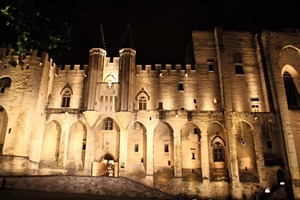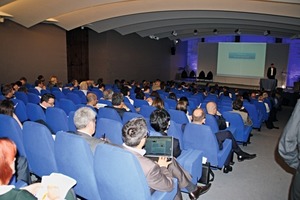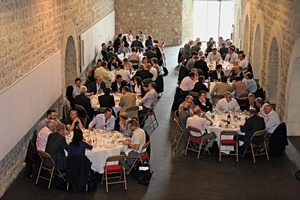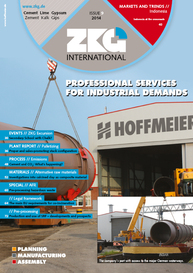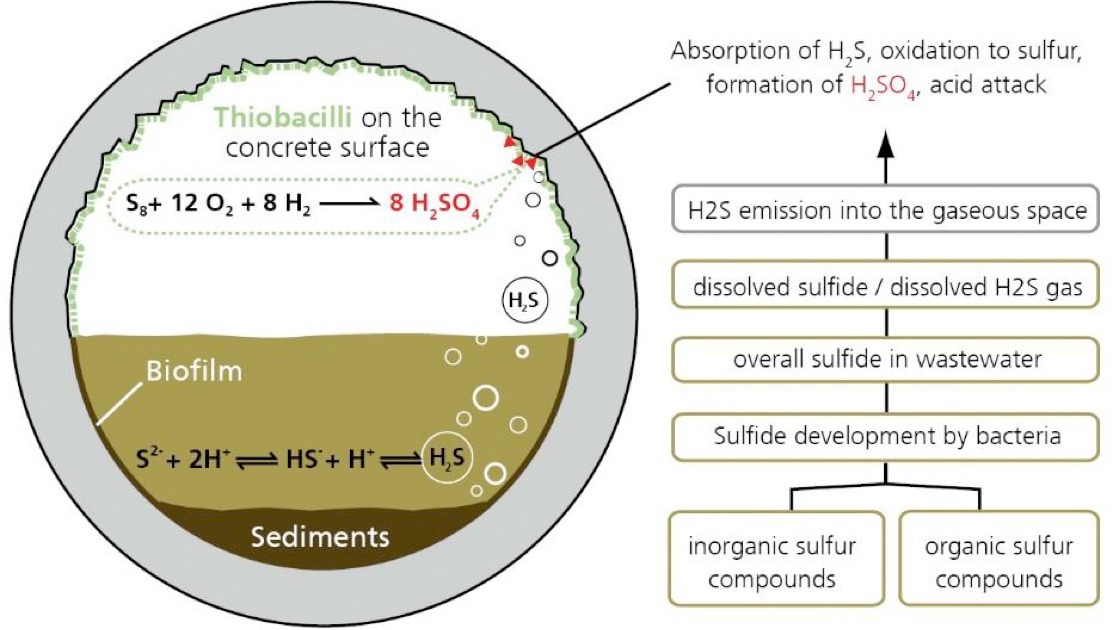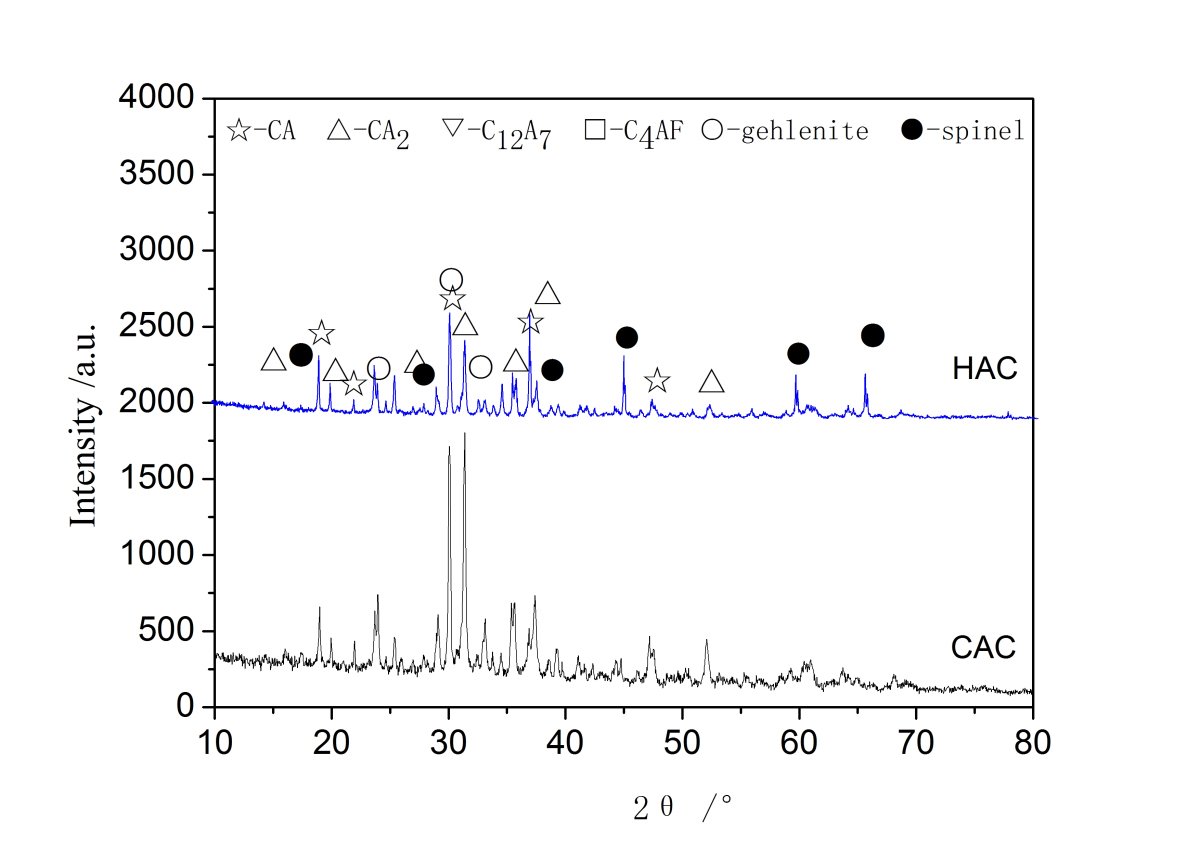Retrospective and preview
Between 19.-21.05.2014, the 4th International Conference on Calcium Aluminate Cements (CAC) was held in Avignon/France. Organized by Cement & Concrete Science from Southwater, West Sussex/UK, Charles Fentiman and Raman Mangabhai and their crew could welcome about 200 guests from 25 countries worldwide in the Conference Centre of the famous medieval Papal Palace.
In her welcoming address, Karen Scrivener from EPFL in Lausanne/Switzerland gave a look at the history of the CAC conferences before she opened the event, which soon started with numerous lectures. These were divided into eleven groups, of which only a few examples are to be mentioned later in this text.
The beginning
Since its invention in 1908, Calcium Aluminate Cement (CAC) has been the subject of much research both in the context of the pure Ca-Al-systems but also systems in which the various attributes of calcium aluminates play a key part. In 1982 an international seminar was organised in Turin/Italy to discuss research findings of leading experts from around the world. Although participation to this event was by invitation only and restricted to some 32 delegates, it demonstrated a lively research interest in this cement and very good progress had been made in its understanding. Even though a number of papers presented at this meeting were subsequently published elsewhere, the output of the meeting was not available in a set of publically available proceedings of the meeting.
Over the years various technical publications had been available and as early as 1962 a very good book was published on calcium aluminate cements written by Dr. Tom Robson who had worked for many years as Technical Director of Lafarge Aluminous Cement Co. Ltd. in the UK. This book ran into several editions and was still the standard text at the time of the Turin seminar despite the fact that it had been out of print for some time and there was a need to address a number of issues that had arisen since publication, not least of which was the “HAC Scare”, but also the appearance of new refractory “low-cement castables” and increased use of complex blended formulae containing CAC.
An updated version of this book has been much needed and the task of writing this was taken on by Dr. Henry Midgley. He was a very well-known – even famous – cement chemist and expert of CAC who had worked for many years at the Building Research Station at Watford/England. Now working in retirement he had drafted several chapters, but sadly Midgley died in 1988 before he could complete this work.
London 1990
With almost perfect timing Raman Mangabhai approached Dr. Charles Fentiman of Lafarge Aluminous Cement Co. Ltd. with a suggestion for an international conference on CAC. The idea quickly gained the support of Dr. Mike George, Technical Director of Lafarge Fondu International (now as Kerneos) and it was decided, in recognition of his contribution to the science of CAC, that the meeting should be dedicated to Henry Midgley. The convention was widely called “the Midgley Symposium” and was held at Queen Mary and Westfield College, University of London, from 09.-11.07.1990.
Several important decisions were taken about the organisation of this meeting and many of these have become something of a tradition for subsequent meetings, that is; the meetings are open to all those who wished to participate, they focus on scientific and technical studies related to CAC and maintain the highest scientific standards with published proceedings with refereed papers available for the delegates on registration. Almost equally to the technical and scientific value of the meetings, they include a convivial social programme to give the delegates plenty of opportunity to get to know each other and hopefully forge new collaborations that will open new applications.
Some 150 delegates from 16 countries attended this first meeting with 27 papers published in the proceedings, which covered a wide range of topics including clinker, hydration, admixtures, durability, and important early studies on blended systems and this quickly became a standard text for those interested in calcium aluminate science. A notable feature of this meeting was the attendance of several leading researchers from Eastern Europe who were for the first time able to present the findings of their research of calcium aluminate research to a Western audience.
Edinburgh 2001
Various research projects were probably inspired by the Midgley Symposium which had been viewed a complete success and ten years later it was apparent that there was a need for a further meeting, again with the support of Lafarge Aluminates (Kerneos) and this time joined by Heidelberger Calcium Aluminates (now Calucem). The organisation of the meeting was managed by the Cement and Concrete Committee of Institute of Minerals and Mining (IOM3) and hosted by Heriot-Watt University, Edinburgh, held on from 16.-19.07.2001. The meeting attracted 49 papers which were published in the proceedings that were edited by Raman Mangabhai and Professor Fred Glasser. Present were some 135 delegates from 17 countries.
Avignon 2008
The 2008-meeting was set up to celebrate the first hundred years of CAC and it seemed fitting for this to be in Avignon, not far from the place of the invention at Lafarge’s founding plant in Le Teil, Ardèche. The venue was held at the Palais des Papes on 30.06.-02.07.2008, what turned out to be a splendid place for this Centenary Conference, with its rich history and state-of-the-arts conference facilities. So it was no wonder that the place gave an excellent opportunity to show the breadth of work presented at the last meeting. At the same time it became clear that a further meeting would be needed in a few years to follow progress being made by the various research teams. Evidence of growing interest in CAC was demonstrated by a marked increase in the number of delegates with some 210 attending from 25 countries.
Avignon 2014
Since the 2008-meeting many researchers had indicated that they were ready with new material for dissemination. Thus, they pointed out that there was already the need for a further conference on CAC and the feedback about the facilities at the PopesPalace and area of Avignon had been so positive that ICT decided to go back there again for this next meeting which now took place in May 2014.
The individual sessions are mentioned in the following with one example each. In total, 57 lectures were given.
Session 1 was an introduction to calcium aluminates. This time, Emanuelle Henry-Lanier from Ecodesign (Kerneos/France) showed the environmental footprint of CAC.
In Session 2 “Hydration” Hervé Fryda (Kerneos) reported about ultra fast hydration, that might open new application fields because of a comparison of different calcium aluminate technologies.
Barbara Lothenbach (EMPA/ Switzerland) continued in Session 3 “Hydration of binary blends” with a thermodynamic modelling of effect of time and silica on the conversion process.
“Refractories/other aluminates” was the headline of Session 4, where Herbert Pöllmann (University of Halle/Germany) showed mono-(strontium/calcium)-aluminate based cements.
Session 5 was titled “The ternary system (CAC-PC-CS). Here, Isabelle Martin (INSA LMDC Toulouse/France) showed a parametric study of binary and ternary ettringite-based systems.
“Volume stability” was the theme of session 6, where Marc Jolin (Laval University/Canada) referred about ultra high early strength shotcrete as new binder composition approach.
The topic of sessions 7 and 8 was “Admixtures”. Amongst others Mar M. Alonso López (IETcc Madrid/Spain) gave an outlook on the effect of PCE admixtures on rheology, hydration and microstructure of calcium luminate cement pastes.
The last day started with Session 9 “Special applications”. Here, Estelle Dalod (EMSE Saint Étienne/France) and her team showed the “Influence of mortars’ chemical composition on algal biofouling”. Session 10 and 11 compiled the topic “Durability”, finishing the conference. An example for this topic came from Jean Herisson (Kerneos) about biogenic corrosion mechanism with a study of parameters explaining CAC higher durability.
In her closing remarks, Karen Scrivener again expressed her gratefulness of having such a large number of CAC-experts being present in Avignon. Anybody in the audience had seen how fast the development of new scientific results is going on, she said, so it might be a good idea to stay in even closer contact with all involved personnel, planning a shorter sequential of events to keep up with the speed of CAC-related research. Avignon would be a good place again, Scrivener concluded, and perhaps 2017 might be a good year for the next CAC-conference. The exact date will be announced early.

